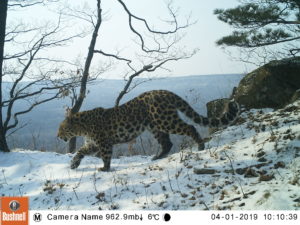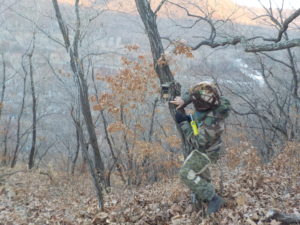There is positive news from WCS Russia in this report on the monitoring of Amur leopards and tigers across Southwest Primorye in the Russian Far East.
WildCats Conservation Alliance (and ALTA and 21st Century Tiger before it) has been helping to fund monitoring in this area since 2001 and long term reliable population estimates of Amur leopards and tigers since 2014. Results demonstrate true growth in both the leopard and tiger populations, as well as increases in prey abundance, providing strong evidence that conservation activities in the area provided by NGOs such as WCS, working with park authorities are working.
In 2019, WCS deployed 116 cameras at 60 locations in Land of the Leopard National Park (LLNP) collecting 6,988 images of wildlife during the trapping period. Importantly, fieldwork and data analysis were carried out in close collaboration and with direct involvement from the staff at LLNP to increase their knowledge and understanding of the process. This cooperation has resulted in a reliable, statistically-rigorous multi-year dataset on Amur leopard and tiger numbers that can then be used to make conservation management decisions and gauge effectiveness of conservation interventions.
Monitoring Amur leopard and tigers: Project activities and key achievements:
- 116 cameras placed at 60 locations covering 957.58 km2
- Cameras were in operation for 107 days
- 6,982 camera trap images were taken in the reporting period, and 2,202 photographs were of leopards and 559 photographs were of tigers

- 29 individual leopards and 13 individual tigers were identified after data analysis in ExtractCompare program
- The average leopard density in the study area is 1.4 individuals/100 km2
- The average tiger density in the study areas is 0.72 individuals/100 km2
- Relative abundance indices demonstrate increases in all three primary prey species
- Sadly, 14 cameras stolen
- Amur leopard density has risen from an estimated 0.6 individuals per 100km2 in 2015 to 1.4 individuals per 100km2 in 2109.


